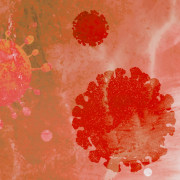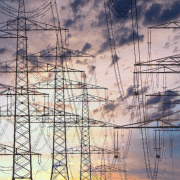|
Getting your Trinity Audio player ready...
|
Image: UN Environment Programme
In October 2021 Corruption Watch (CW), working with procurement law expert Prof Geo Quinot of Stellenbosch University, released its first report that analyses procurement information drawn from National Treasury (NT) data captured between 2016 and 2020. The analysis was made possible by CW’s online tool, Procurement Watch (PW), which was launched at the same time.
The tool aggregates data, specifically in terms of deviations and expansion of contracts, along with debarment of suppliers, from published procurement information received by NT from all procuring organs of state. It then serves the data in a form that can readily be worked with, making the analysis of trends much easier.
A second PW report with the same focus, but extending to 2021, was launched on 4 August 2022 at a CW-hosted webinar with guest speaker Quinot, the author of both reports.
“It’s about transparency on the one hand and accountability on the other hand,” said CW executive director Karam Singh, introducing the webinar. “When we talk about transparency, it’s very much about the data available for us to effectively monitor how procurement is taking place.”
The ‘we’, he added, could be officials within government, people at the national or provincial treasuries, people in law enforcement, or in civil society.
That was the genesis of Procurement Watch, Singh said, because while NT does make data publicly available, wading through it is time-consuming and complicated. “We envisioned the notion of creating a tool that could begin to engage with that data to understand what it is telling us. Are there red flags in the data that point to irregularities that in turn could point to corruption?”
Download the second Procurement Watch report.
Red flags indicate closer scrutiny is needed
“Public procurement is key to service delivery,” said Quinot, who is also the founding director of the African Procurement Law Unit at the university. “With about R1-trillion spent annually, it is a major area of abuse. For at least 10 years the Auditor-General has signalled supply chain management (SCM) as one of the weakest links in South Africa’s public finance management regime.”
Deviations and expansions are potential red flag areas and may indicate a lack of planning for procurement requirements, unexpected changes to the procurement process, or corruption – but it is important to remember that not all red flags are automatic indications of corruption. There may be legitimate reasons for deviations and expansions, as they are accepted mechanisms within procurement, provided that prescribed conditions are met.
“For example, if an organ of state wishes to acquire a unique piece of scientific equipment that is manufactured by only one supplier, there is no point in inviting public tenders for the supply of such equipment even though the value of the envisaged acquisition may be far above the threshold for the mandatory use of open bidding methods of procurement. Using the open bidding procedure would in fact be a waste of public resources since it would not generate competition among suppliers. Instead, under such circumstances, procurement rules allow the relevant organ of state to deviate from the open bidding procedure and contract directly with the sole supplier of the equipment.”
It is therefore important to analyse each case individually to determine whether there is any evidence of abuse of the system. Similarly, where bidders have been restricted from conducting business with the state, known as debarment, there may be reasons that relate to performance failure, and not to abuse of the procurement system.
“A red flag is just that, nothing more. The PW tool is telling us about trends that may point to abuse and that are worthy of further interrogation.”
This is why monitoring and analysis of procurement data is crucial to the interception of irregularities and ultimately, to a public procurement system that works efficiently and fairly.
Deviations in public procurement
Deviations should only be used in exceptional cases where normal procurement rules cannot apply. An entity relying heavily on deviations in its procurement function, the report noted, may raise a red flag signalling possible abuse of the procurement system or a weakness in procurement planning within the entity.
The PW report picked up a slight decrease overall in deviations reported since 2017 – Quinot advised that data from 2016 is not comprehensive enough to contribute to a useful analysis and indeed, the report shows a comparatively tiny number of deviations in that year compared to the following years.
The proportion of deviations unsupported by National Treasury increased from 2018 and in 2021, fully 82% of deviations were unsupported compared to 66% in 2020.
“The similarity in total number of deviations between 2020 (758) and 2021 (767) is particularly noteworthy,” the report noted. Because of 2020’s relaxed procurement rules as a result of the Covid-19 pandemic, significant portions of procurement in that year that would under normal circumstances be noted as a deviation were not, as they fell under emergency procurement. This suggests that the total number of deviations reported in 2020 constitutes a smaller proportion of overall procurement compared to 2021, and that there was a net reduction in total number of deviations reported in 2021.
The total value of procurement via deviations in 2021 exceeded R34 119 386 006 – but this is only the reported figure. The largest single deviation by value, to the value of R7.59-billion, belonged to Transnet and the reason was an urgent need for capital injection. This deviation was not supported by NT.
Other entities on the list of the 10 biggest deviations included the South African Revenue Service (Sars), the Department of Military Veterans, the Universal Service and Access Agency of South Africa, the Government Technical Advisory Centre (two deviations), the South African Broadcasting Corporation, the Road Traffic Management Corporation, the Department of Cooperative Governance, and the Government Printing Works.
All of these deviations were either unsupported or conditionally supported.
In terms of the highest number of deviations recorded, Eskom topped the list with 31. Somewhat concerning, the report noted, is the reason for deviation reported on 7 December 2021 – this is given as “Easy way out (making deviations normal way of procurement)”.
Eskom was closely followed by Sars at 28 deviations and the Department of Environment, Forestry and Fisheries at 26.
Another concern, according to the report, is that NT itself reported 21 deviations of which four are indicated as not supported and another six only conditionally supported. “This suggests that only about half of the deviations reported by National Treasury, as the custodian of public procurement in South Africa, was fully supported by itself. “
For more detail on deviations, download the PW report.
Expansions of public contracts
Similarly, expansions are provided for in unexpected circumstances, as long as the contract adjustment does not include material changes, because then the procurement process is no longer fair.
The process, however, carries significant risk. “Such expansions may easily be abused to award a much bigger contract to the supplier than was originally tendered for. The expanded contract will thus not be the product of competitive bidding.”
According to the PW report, the data show a consistent reduction in the number of reported contract expansions year-on-year between 2017 and 2021, with a significant increase in the 2021/22 financial year.
The total value of contract expansions in 2021 exceeded R88 870 997 286. This too is only what was reported, bearing in mind that in a notable number of instances (59) the value of the expansion was not reported.
The largest contract expansion, by value, in 2021 was reported by the Passenger Rail Association of South Africa. This was valued at R24-billion and was in favour of Siemens. It was not supported by NT.
Eskom featured strongly on this list with eight of the 10 most expensive expansions. The other one belonged to the Department of Home Affairs. Most of these were conditionally supported, with one other not supported.
“What we see in the data here really calls for further interrogation of what’s going on in Eskom,” said Quinot, “because it can either mean that there are problems in terms of SCM in Eskom or it can simply mean that our procurement rules are not fit for purpose in the context of Eskom … one would have to look in much more detail at each one of these transactions and interrogate the real reasons behind it.”
For more detail on expansions, download the PW report.
Debarment of suppliers
“Debarment globally is viewed as one of the best mechanisms to deal with abuse of SCM,” said Quinot, “and it simply refers to a process through which you restrict the suppliers that can do business with the state.”
Currently the South African procurement system has two mechanisms which cover this situation – the register for tender defaulters, and the database of restricted suppliers.
The former is created under the Prevention and Combating of Corrupt Activities Act, and follows a criminal prosecution. “The court in this instance will order the debarment of the convicted entity where that entity has been convicted of a procurement-related crime under the act,”
In contrast, the database of restricted suppliers is an administrative mechanism maintained by NT. No court order is involved, as the procuring entity or NT decides on debarment.
The register for tender defaulters, as was the case with the first report, has not one entry. This, said Quinot, raises big red flags. “This is something that one must interrogate. Why, given everything going on in South Africa, do we not have a single supplier on this register?”
However, this is a prosecutorial matter, he added, indicating that questions must be asked in terms of the prosecution of procurement-related crime specifically.
On the other hand, listing on the Database of Restricted Suppliers can occur for various reasons, including abuse of the SCM system such as fraud in winning the bid, corruption more generally, failure to perform under a contract, or failure to declare a sub-contracting arrangement.
“Of particular interest is the small number of entities (34) that have submitted names to this list,” the report noted, “bearing in mind that there are around 40 national departments, 103 provincial departments, 278 municipalities, nine constitutional institutions and 154 other public entities listed in schedule 3 of the PFMA – that is at least 584 entities procuring under rules that include debarment on this list (not counting subsidiaries and municipal entities).”
This suggests that the mechanism is not comprehensively used, said Quinot, and brings up yet more questions.
Most reasons for debarment related to fraud and misrepresentation (around 60%), while the remaining 40% was split between performance problems which do not involve fraud or corruption, and unspecified or other reasons, such as breach of contract.
Since the start of 2021, only 24 suppliers have been restricted by just five entities.
For more detail on debarment, download the PW report.
“Procurement Watch is an invaluable tool,” Quinot concluded. “It enables us to start to do the kind of analysis that will help us uncover where the real fault lines lie in procurement. This tool is a really excellent starting point in helping us do the kinds of empirical data work to figure out where those problems are, on the basis of which we then can responsibly redesign and adjust.”








